Dark Circles : What is this ?
The eye area is one of the most sensitive areas on the face. Regularly strained (frowning, blinking), it easily reveals signs of fatigue and aging. Puffiness and dark circles under the eyes mark the lower eyelids where the skin is delicate and thin. They are generally sought to be concealed as they weigh down the look and give the impression of a tired appearance with darkened eyes. This affects the overall aesthetics of the face. To conceal, reduce, or remove them, there are natural anti-dark circle solutions that help decongest the eyelids and eye contour. Discover with Mrockland how to combat dark circles on the face.
The unique Clinique M approach
Our three expert physicians in injectables, including Dr. Nyan Narine, provide safe and personalized treatments to correct dark circles. The result: a natural, refreshed, and radiant look.

Recommended Treatment
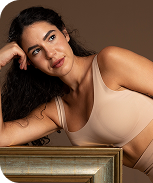
Bio-Regenerative Solutions
Personalized bio-regenerative solutions combining targeted fillers and advanced actives help correct under-eye circles while respecting the delicate eye area.
Types of dark circles
Blue/Purple: Poor circulation, fatigue, stress.
Brown: Excess melanin, sun exposure, darker skin tones.
Hollow: Volume loss, aging, weight loss.
Puffy: Water or fat accumulation, giving a heavy or tired appearance.
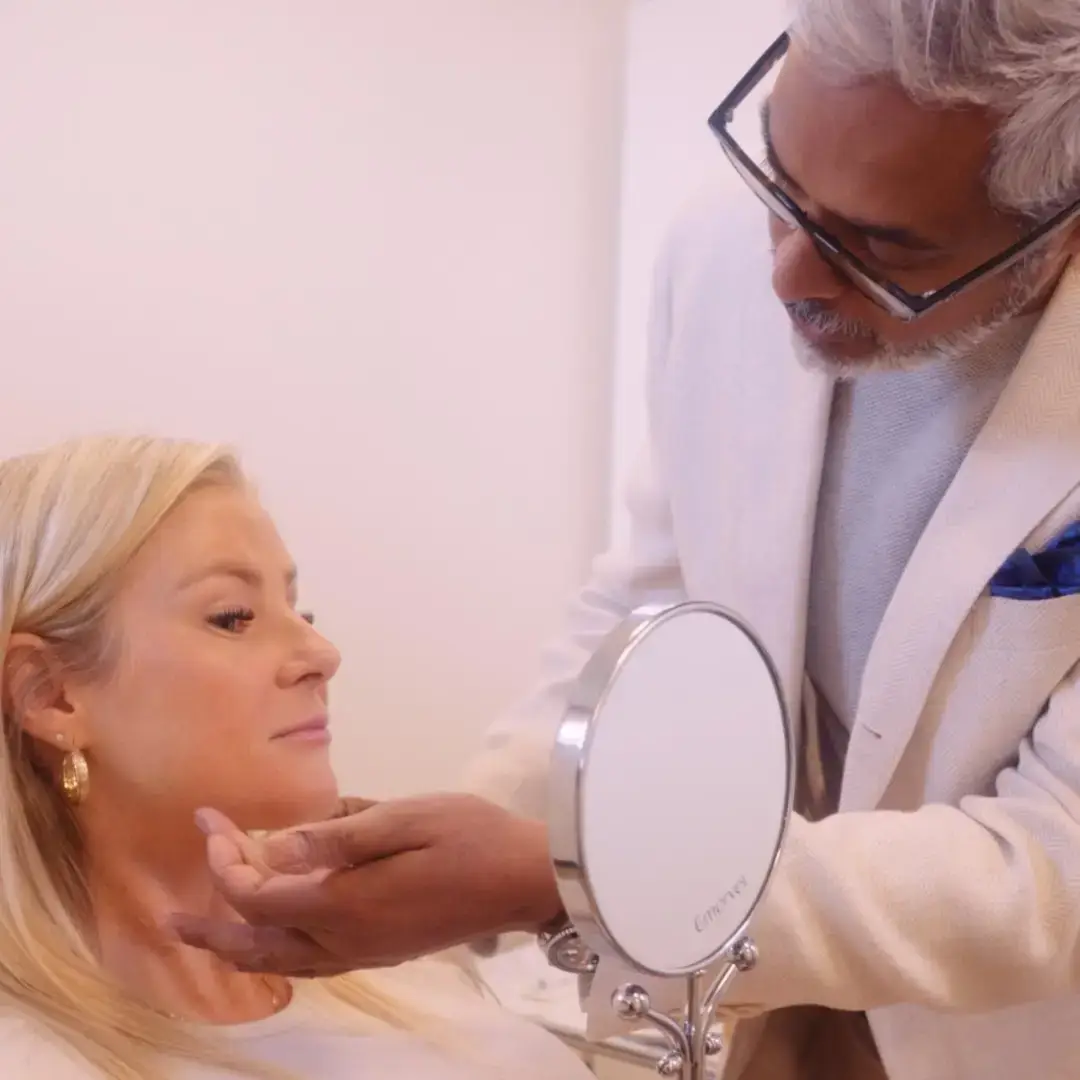
Free consultation
Blue or Purple Dark Circles
They can appear early in childhood or from adolescence onwards and do not really constitute a sign of aging. Blue circles under the eyes are often due to the transparency of the skin on the lower eyelids. The skin around the eyes is 5 times thinner than the rest of the body. Among the network of blood vessels located in this region of the body, there are arteries and veins.
Blue circles are due to the thinness of the skin under the eyes, which allows the bluish character of these different blood vessels to appear. Dark circles are more visible depending on the characteristics of your tissues. The thinner your skin is under your eyes, the more visible the blue circles are. However, a good lifestyle can limit the presence of this type of dark circle.
Brown or Tan Pigmentary Circles
They are caused by melanin spots found under the skin. Brown in color, they also take on brown or yellow hues. The melanin spots responsible for pigmentary circles are produced by melanocytes. Brown circles are therefore due to the thinness of the skin around the lower contour of your eyes. This part of the face quickly reveals the presence of melanin in the epidermis. On the other hand, the area around the eye orbit is also very exposed to UV rays.
It is therefore susceptible to be colored by tanning pigmentation. Pigmentary circles appear more often in patients with darker skin (people of Middle Eastern, Southeast Asian, or North African origin). In some patients, hereditary predispositions can also be the cause of brown circles. To prevent the appearance of this type of circle, it is recommended to use sun protection on the face in case of prolonged sun exposure. This will help limit the development of pigmentary circles.
Hollow Circles
Unlike pigmentary and blue circles, these circles are directly related to the effects of aging on the skin of the face. A V-shaped hollow forms with age between certain facial muscles and the eye. Sometimes, the hollow is present in individuals from a young age due to certain hereditary factors. As they age, the muscle and fat loss around the eyes creates a loss of volume and a sliding of fatty tissues from the lower edge of the orbit towards the cheekbones. These fats cause a more or less extended semi-circular groove under the eyes. Hollow circles are treated by filling.
“Under-Eye Bags” or Full Circles
They are caused by tissue relaxation. The eye is engulfed in a fatty bag for protection (periorbital fat). As they age, this fatty mass can either melt or shift due to tissue relaxation. The effect of gravity, however minimal, creates bags under the eyes by promoting the downward movement of fat. Full circles can appear quite early (from the age of 30). However, they should not be confused with swollen bags that are sometimes noticed upon waking.
What are the main causes of under-eye circles ?
The appearance of under-eye circles can be due to several factors. The main element is the aging of tissues. We blink about 15,000 times a day. Over time, it is evident that the skin begins to tire. The tissues under the eyes thin out and lose elasticity and tone. Fine lines form and accentuate the effect caused by blinking.
Genetic predispositions can also be the cause of pigmented or cruel circles. They can sometimes be found in members of the same family.
The causes vary mainly according to the type of circle. Those with black colors are linked to thin blood circulation. They should not be confused with darker circles caused by excessive melanin production. This type of circle, also hereditary, is more common in people of Mediterranean descent.
Bags under the eyes can be exacerbated by poor lifestyle choices. Lack of sleep, excessive consumption of tobacco and alcohol could be the cause of water retention that creates bags under the lower eyelid.
Furthermore, in women, hormonal changes are also responsible for the appearance of circles under the eyes. The female hormonal system is constantly changing. Pregnancy, menopause, and menstruation, these different phases can affect blood circulation, and thus on circles. Lack of sleep is also cited as a cause of appearance. Anxiety, stress, which sometimes cause a buildup of lymph under the eyelids, can also be mentioned. Apart from these factors, aggressive makeup, and non-natural cosmetics can negatively affect the skin and its cycle. They cause irritations and redness.
What treatments are there for under-eye circles ?
To effectively treat under-eye circles, several solutions can be considered. Depending on the patient’s needs, the doctor may decide to perform surgery or opt for filler injections.
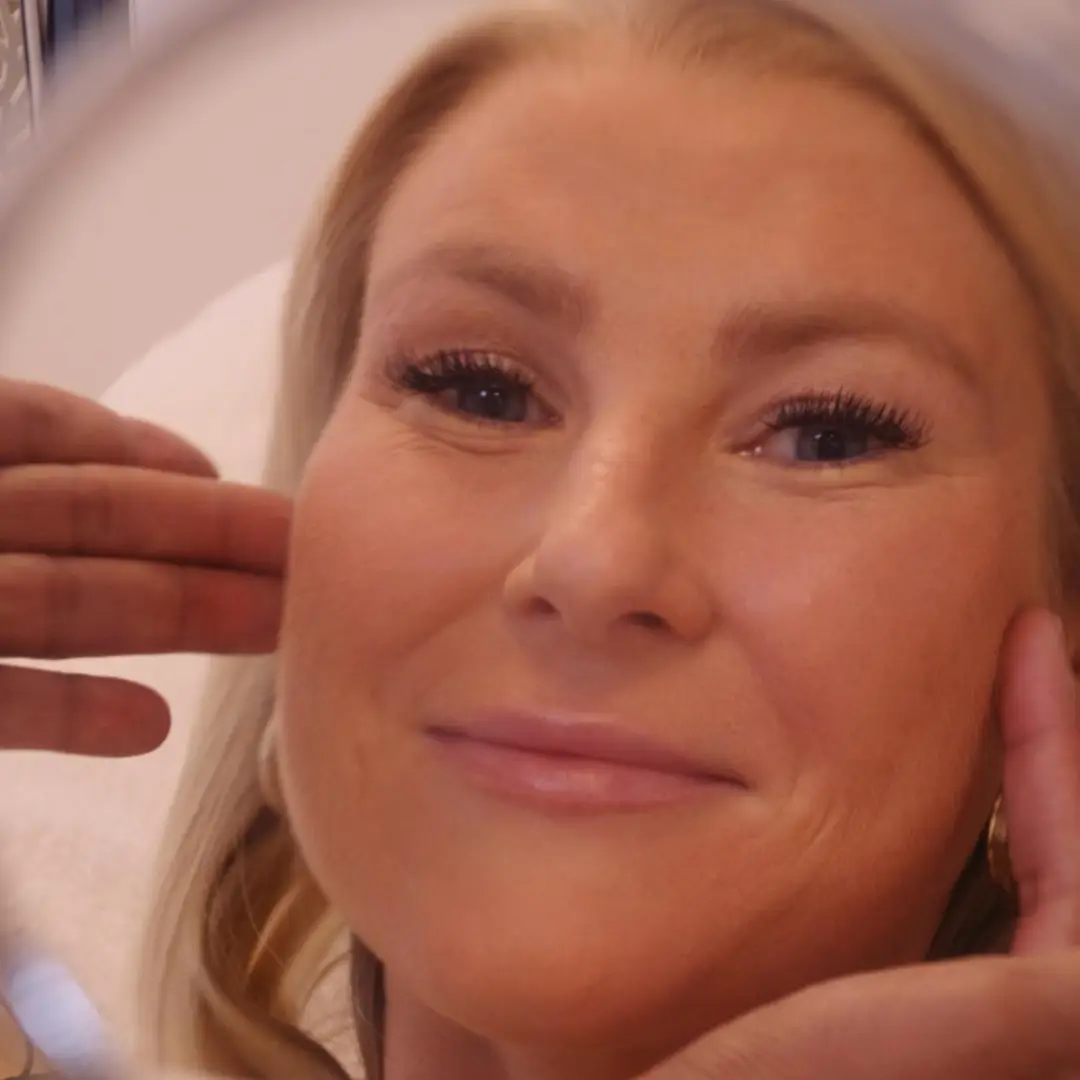
Non-surgical treatments (non-invasive)
Surgical Treatments (Invasive)
Consultation gratuite
Non-surgical treatments (non-invasive)
If you prefer to avoid surgical procedures, there are highly effective non-invasive treatments to eliminate under-eye circles and improve aesthetics around the eyes.
Bio-Regenerative Treatments — by Dr. Nyan Narine
Renowned for his
Renowned for his innovative approach to bio-regenerative medicine, Dr. Nyan Narine uses the latest scientific advancements to treat dark circles with personalized solutions. His expertise lies in a deep understanding of the underlying causes, ensuring natural and long-lasting results.
He favors a customized approach, combining tailored fillers, exosomes, peptides, and brightening molecules to restore freshness and harmony to the eyes.
Hyaluronic Acid Injection
This is one of the most favored methods by professionals and patients. This technique allows for restoring volume to the circles and brightness to the eyes. The results obtained last between 12 and 18 months.
For hyaluronic acid injection, the doctor uses a cannula or a needle. Although more precise, the needle presents more risk of edema and bruising. The procedure only takes a few minutes and does not require hospitalization. Hyaluronic acid not only fills hollow circles, but also moisturizes the dermis profoundly and reduces the presence of colored circles and the transparency of the skin.
Before injection, the surgeon first assesses whether the filling product will truly remove the circles and give a less tired look to the eyes. Filling circles is most often done in the office. Hyaluronic acid injections can last between 15 and 30 minutes. It will depend mainly on the complexity of the circle.
Exosomes
These are nano-vesicles produced by cells. They offer a natural solution to fight against skin irregularities such as circles or bags under the eyes. Involved in intracellular communication, exosomes contain various molecules such as nucleic acids, lipids, proteins, etc. Their role is mainly to send messages of cell regeneration from cell to cell. They provide the necessary information for collagen stimulation by fibroblasts.
Due to their strong inflammatory potential, they also slow down cell destruction and improve the overall quality of the skin. Exosomes promote blood circulation and offer a uniform coloration of the area under the eyes. For a treatment based on exosomes, the specialist uses micro-needles for injections directly into the epidermis. Exosomes act deeply to not only regenerate the skin but also revitalize it. They can be administered as serums, topical products, or skin injections.
Surgical Treatments (Invasive)
The two main ones used for circles are blepharoplasty and lipofilling of the circles.
Blepharoplasty
Performing lower blepharoplasty is one of the most effective surgical interventions for permanently rejuvenating the look. It aims to definitively correct the presence of fatty bags and hollow circles under the eyes. The intervention is indicated for drooping eyelids, wrinkles, and circles hollowed out by the aging of tissues. The operation aims to remove excess fat and tighten the skin tissues to give your face a younger, more symmetrical, and brighter look. The intervention varies according to the patient’s needs. Generally, blepharoplasty is performed on an outpatient basis under local anesthesia. It is not painful, but it can still cause discomfort for the patient. However, this is transient and relatively mild. The surgeon can complete the operation with lipofilling of the circles.
Blepharoplasty is not a painful surgical intervention. Patients are allowed to return home just a few hours after the operation. Once home, you must monitor the incision points, apply antibiotic ointment, and make an appointment to remove the sutures. The incisions made by the surgeon during the operation may cause swelling and bruising under the eyes. However, the discomfort only lasts briefly and is quickly alleviated by the antibiotic ointment.
Lipofilling of the Circles
Developed in the 1990s, lipofilling combines the benefits of liposuction and re-injection of fats into areas such as the eye contour that sometimes lack volume. It involves an autologous fat transfer. Extracted from the back of the knees or abdomen, the fat is cleaned and injected into the eyelids to tighten the skin and fill in the hollows.
Surgeons also use the nanolipofilling technique, which involves isolating the stem cells contained in the fat. These will then be injected into the eyelids to stimulate collagen production and vascularization. The intervention, therefore, consists of performing a liposculpture by restoring facial volumes. Lipofilling of the eyelids and eye contour allows for filling in the hollows and loss of volume in the lower and upper eyelids.
Conclusion
The presence of circles on the face can be a source of discomfort and lack of self-esteem. Circles can have different causes. To correct this problem, there are several surgical and non-surgical treatments depending on the patient’s needs. The MRocland dermo-aesthetic clinic specializes in filler injections to give your eye contour a more aesthetic appearance.
With us, you can regain your youthful look while remaining natural. A specialist clinic in the treatment of circles using injectable products, you can request one of our experienced doctors for filler administration with confidence. We only use recognized dermal filler agents. Injectable products are painless with immediate visible results. Do not hesitate to seek our expertise to eliminate circles around the eye contour.
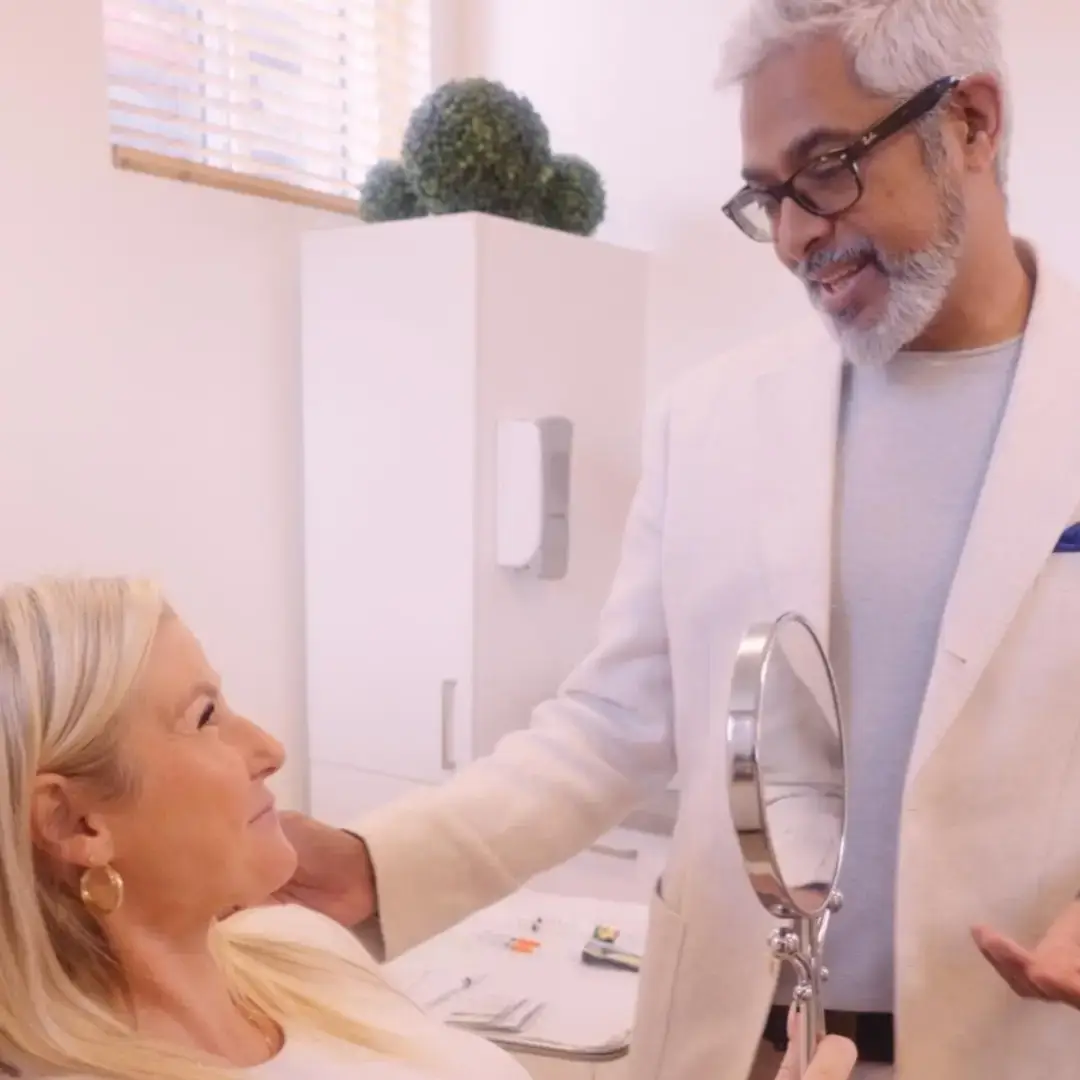
Frequently Asked Questions
Pigmentary circles result from an overproduction of pigments, while bags result from water and fat accumulation. Eye circles can have hereditary origins or result from a healthy lifestyle, including lack of sleep, stress, alcohol and tobacco consumption, or inadequate diet.
Hyaluronic acid injection and blepharoplasty are the most effective treatments for correcting circles. Laser treatment is also used for colored circles, as it targets the origin of skin pigmentation at tyelid level. Depending on the severity of the circles, several sessions may be necessary, and sometimes, laser treatment may be supplemented by a peel for optimal results.
Blepharoplasty allows for permanent correction of the presence of fatty bags and hollow circles under the eyes. It is indicated to correct drooping eyelids, wrinkles, and hollow circles caused by aging tissues.
As one might expect, this approach is widely used, as cold promotes blood circulation, thus decongesting circles. Simply place ice cubes in a washcloth or compress, then apply them to the eyes for about fifteen minutes. Although the results are optimal, they remain short-lived.
Your transformation starts here
Do not hesitate to contact us for a personalized consultation and to begin your transformation.
* Results may vary from person to person. We present, to the best of our knowledge, an average of the results obtained. No guarantee is offered. Our goal is to properly evaluate your profile so that you can make an informed decision.
Get a free consultation*
Consultation without obligation
Thousands of satisfied clients have trusted our medical-aesthetic clinic for over 15 years.
Thousands of satisfied customers

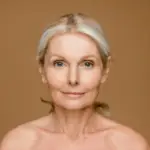


A trusted medical-aesthetic clinic for over 15 years.
⭐️⭐️⭐️⭐️⭐️ — 4.9/5 on Google
Our commitment
Response within 24 hours
Personalized treatment
Contact Us
Phone
(438) 601-4718
Our Address
233 Av. Dunbar, Mont-Royal, QC H3P 2H4, Canada

